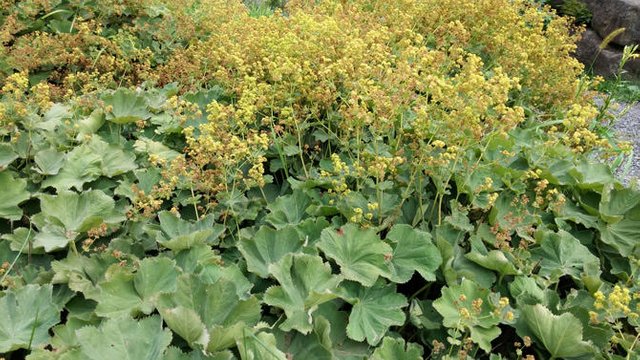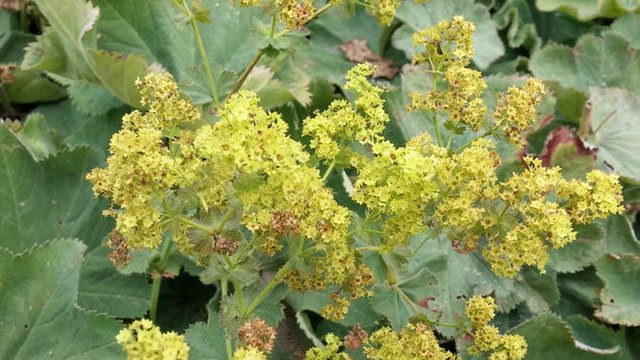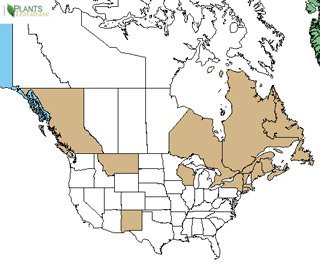Getting to Know Herbs: Lady's Mantle
Used as a tonic of the female reproductive system for its astringent and anti-inflammatory properties, lady's mantle is recommended to ease abundant menstrual flow and relieve cramps and menopausal symptoms. It's astringent properties make it an effective treatment for diarrhea. Extracts are made from the leaves and flowers which are harvest at the start of the flowering period.

Photo by @krnel
The scientific botanical name is Alchemilla, with many species. The one pictured is Alchemilla xanthochlora which is most used for medicinal purposes. Other names for lady's mantle are Alchemilla vulgaris, Alchémille, Alchémille Commune, Alchémille Jaunâtre, Alchémille Vert Jaune, Alquimila, Alquimilla, Feuilles d'Alchémille, Frauenmantel, Frauenmantelkraut, Leontopodium, Lion's Foot, Manteau de Notre-Dame, Manto de la Virgen, Marienmantel, Nine Hooks, Nueve Ganchos, Pie de León, Pied de Lion, Silerkraut, Stellaria.

Photo by @krnel
Key Points
- safe to consume
- treats menstrual problems in women, and other uses
- native to Europe
History
The name comes from the Latin alchemia, meaning alchemy. This comes from the belief in the power of the drops forms on the plants.
Where is it found?
Lady's mantle is native throughout Europe, but absent in Portugal and the Mediterranean islands. It's been introduced into northern and Eastern Europe, southeastern Australia, as well as North America.
It can be found in moist meadows, open woods, pastures and on rock ledges in mountainous areas.
What's it used for?
Alchemilla xanthochlora is the species typically used for medicinal purposes and for herbal tea. All parts of the plants, except for the root, are used.
It's used to treat stomach problems, mild diarrhea, diabetes, water retention, swelling (inflammation), and muscle spasms. It can be used as a gargle for sore mouths and throats. Applying alchemilla to the skin can stop bleeding; improve wound healing; or treat ulcers, eczema, or skin rashes. It can also be added to bath water to treat lower-abdominal ailments.
Women can benefit from it's use for heavy or painful menstrual periods or for symptoms of menopause.
Young leaves can be cooked or eaten raw, but ti has a dry astringent flavor. The root can also be cooked and eaten.
Are there any risks?
It's pretty much safe all around. Some research indicates it could possibly cause liver damage, but other experts argue against that conclusion.
References:
Previous posts on Getting to Know Herbs:
Hyssop | Burdock | Catnip | Lavender | Yarrow | Marshmallow | Skullcap | Codonopsis (Poor Man's Ginseng) | Schisandra | Rhodiola | Canadian Goldenrod | German Chamomile | Blue Vervain | Blessed or Holy Thistle | Common Horehound | Cayenne | Ashwagandha | Gotu Kola | Common Verbana/Vervain | Holy Basil | Sweet
Annie | Globe Artichoke | Butterfly Weed / Pleurisy Root | Joe-Pye Weed / Gravel Root | Valerian | Malva/Mallow | Boneset | Elecampane | Lungwort | Cramp Bark | Motherwort | Common Plantain | Eleuthero (Siberian ginseng) | Black Cohosh | Common Bearberry | Mahonia Mountain Grape (Oregon Grape) | Blue Cohosh | Goldenseal
Thank you for your time and attention. Peace.
If you appreciate and value the content, please consider: Upvoting, Sharing or Reblogging below.
 me for more content to come!
me for more content to come!
My goal is to share knowledge, truth and moral understanding in order to help change the world for the better. If you appreciate and value what I do, please consider supporting me as a Steem Witness by voting for me at the bottom of the Witness page.


I like the safe all around part. :-)
Yup, sounds good to me too. Not many have like no issues.